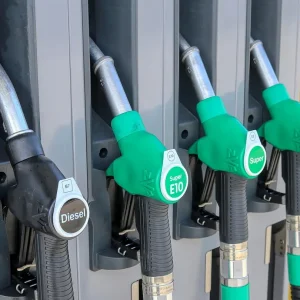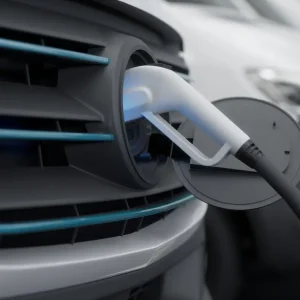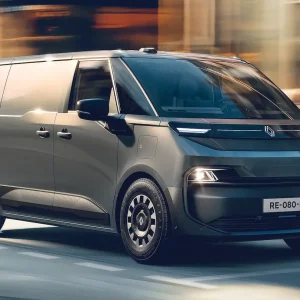This year’s Green Award goes to the Mitsubishi Outlander 4Work PHEV.
The PHEV stands for plug-in hybrid vehicle and the manufacturer broke new ground in the UK’s LCV market with its introduction last year.
The prize will come as a welcome fillip for Mitsubishi, which missed out in the 4×4 category that it had won for the previous two years with the conventional Outlander 4Work.
Together with the passenger-carrying Outlander PHEV, Mitsubishi claims the hybrid accounts for half of all plug-in vehicle sales in the UK.
The five-door all-wheel drive LCV qualifies for the Government’s Plug-in Van Grant that covers 20% of the list price up to £8000 and is capable of travelling for 30 miles on battery power alone, according to Nissan, before reverting to petrol-hybrid drive.
A 2.0-litre petrol engine coupled with a pair of 60kW electric motors connected to a lithium-ion battery pack powers the vehicle, which has a remarkable official fuel consumption figure of 148mpg together with meagre C02 emissions of 44g/km.
The 4Work PHEV is equally at home on the road or when it ventures off the beaten track but it is not designed to tackle extreme off road conditions. As such it is a soft-roader rather than a hardcore off-roader. But for the sort of rural-based customers needing to negotiate grit free country lanes in the snow and ice it could be just the job.
The selectable 4WD system kicks in when you start to lose grip in front-wheel drive but for trickier terrain 4WD Auto can be selected to drive all four wheels continuously. In the toughest conditions Lock mode delivers more traction.
The Government’s Environment Agency has shown its appreciation of the plug-in hybrid by ordering 65 models.
If the PHEV does operate in the capital, then it is exempt from the London Congestion Charge.
Mitsubishi’s UK boss Lance Bradley says: ““With access to charging points it’s perfect.” This enables users to regularly top up the electric charge before it runs out – a process, Bradley says, that has come to be known as ‘nibbling’.
The road tax and company car tax incentives that benefit the passenger car version of the PHEV Outlander do not apply to the LCV derivative but Bradley insists: “Where organisations have a policy to be green or to be seen to be green it has an advantage.”
But it’s not just an environmental flag bearer, the PHEV handles well both on and off-road.
To encourage an economical driving style a dashboard feature displays zero to five green leaves, with five being the most frugal.
In addition, Mitsubishi puts its dealers through a comprehensive training programme in preparation for selling the PHEV, detailing features such as the paddle shift regenerative braking system, for example.
When the amount of charge in the battery starts to fall significantly or when more power is needed the engine cuts in and acts as a generator, supplying juice to the electric motors. At motorway speeds the engine does most of the work with the motors jumping in to provide a bit more boost when overtaking or climbing a steep hill. Electric motors deliver maximum torque instantly. The battery can be switched to charge mode that allows electricity to be generated by the engine and stored in the traction battery either when stationary or on the move.
Save mode maintains the level of charge in the battery while you are driving. Regeneration when you brake puts some charge back into the battery, but to return it to full strength you will need to plug your vehicle into a charging point.
The PHEV 4Work is a useful load-lugger with a 1.6m3 cargo space, accessed by a rear hatch and side-hinged doors on both near and off-sides, and a 500kg payload.
Did you Know?
With a list price of £34,524, including VAT, an Outlander 4Work PHEV qualifies for a Plug-in Van Grant of £6905.
Highly Commended
Nissan E-NV200
Last year’s winner of the Green Award is Highly Commended this time.
Nissan’s zero-tailpipe-emission E-NV200.
It’s a practical, useable van with a gross payload capacity of up to 703kg and a 4.2m3 cargo area. Entry to the load box is by means of twin asymmetric back doors plus a sliding door on each side of the body. Beneath the cargo bed is a 24kWh 48-module 360v 192-cell laminated lithium-ion battery pack. It powers a 80kW AC synchronous electric motor mounted under the bonnet and married to a single-speed step-less transmission. A battery charger and inverter complete the package and Nissan quotes a range of 106 miles between battery charges.





